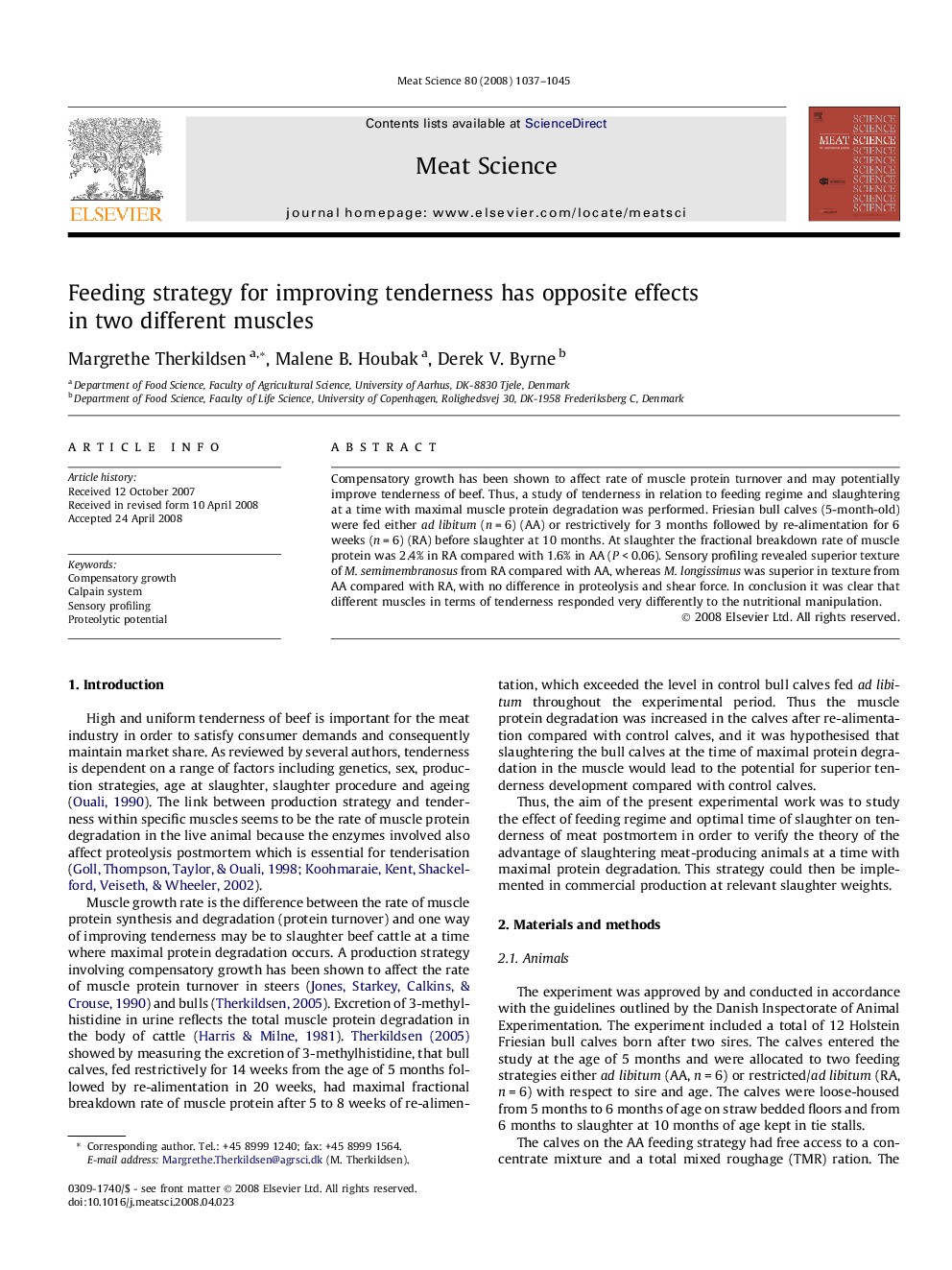| Article ID | Journal | Published Year | Pages | File Type |
|---|---|---|---|---|
| 2450674 | Meat Science | 2008 | 9 Pages |
Compensatory growth has been shown to affect rate of muscle protein turnover and may potentially improve tenderness of beef. Thus, a study of tenderness in relation to feeding regime and slaughtering at a time with maximal muscle protein degradation was performed. Friesian bull calves (5-month-old) were fed either ad libitum (n = 6) (AA) or restrictively for 3 months followed by re-alimentation for 6 weeks (n = 6) (RA) before slaughter at 10 months. At slaughter the fractional breakdown rate of muscle protein was 2.4% in RA compared with 1.6% in AA (P < 0.06). Sensory profiling revealed superior texture of M. semimembranosus from RA compared with AA, whereas M. longissimus was superior in texture from AA compared with RA, with no difference in proteolysis and shear force. In conclusion it was clear that different muscles in terms of tenderness responded very differently to the nutritional manipulation.
